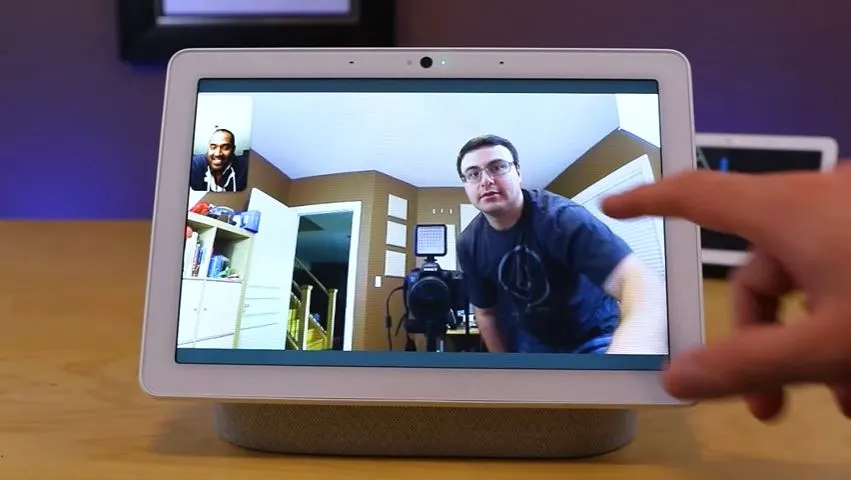In recent weeks, reports have surfaced regarding the gradual takeover of Google’s new generative AI assistant, Bard, signaling a potential shift in the landscape of digital assistants.
Several signs point towards a significant transformation, particularly concerning Google Nest and Pixel products.
There are three important news that can give us a clue about what’s happening, but we have few concrete details.
So, in this article, I’ll go over these news items and give you the lowdown on what’s going on. So, keep reading, and let’s find out together.

By continuing to use this website you agree to our Terms of Use. If you don't agree to our Terms, you are not allowed to continue using this website.
Restructuring at Google
Google’s internal restructuring has fueled speculation about the impending changes. A recent report unveiled the consolidation of hardware teams responsible for Pixel, Nest, and Fitbit under a single leader.
Simultaneously, core engineering and Google Assistant teams saw notable reductions in personnel, a substantial move considering Google’s workforce expansion in recent years.
A detailed breakdown of this restructuring reveals a significant transformation in various teams responsible for some of Google’s key hardware and software offerings.
Core Engineering Team
The core engineering team at Google plays a pivotal role in the development of fundamental technologies that underpin various products and services.
The reduction in personnel within this team signals a shift in focus, potentially aligning resources with strategic priorities and emerging technologies.
Google Assistant Team
The Google Assistant, a cornerstone of Google’s ecosystem, has also witnessed personnel reductions within its development team.
This move comes amid a broader industry trend toward more advanced and dynamic digital assistants, with implications for the future direction of Google’s voice-activated AI services.
Discover more about Google’s discontinued products on the Killed by Google website.

Google Assistant Feature Reduction: Streamlining for Quality
In a subsequent announcement, the Google Assistant team revealed the removal of 17 features from their voice assistant.
The rationale behind this decision was to enhance the overall quality and reliability of the Google Assistant.
These features, deemed relatively underutilized, were identified as potential candidates for removal to streamline the user experience.
Clues in Beta Versions
9to5Google’s exploration of beta versions of Google and Google Messages apps uncovered noteworthy language and functional changes.
These alterations strongly suggest an imminent transition from Google Assistant to Bard. However, questions linger about Bard’s accessibility, particularly in regions like Canada, and its integration with existing Google Nest products.
Pixel, Nest, and Fitbit: A Unified Approach
One of the most notable changes pertains to the consolidation of hardware teams overseeing the development of Pixel, Nest, and Fitbit products.
Traditionally managed separately, these teams are now operating under a unified leadership structure.
This strategic move aims to foster collaboration, streamline development processes, and create a more cohesive ecosystem for Google’s hardware portfolio.
Pixel Product Line:
The Pixel product line encompasses Google’s range of smartphones, laptops, and other personal devices.
With the consolidation of hardware teams, we can anticipate a more integrated approach to Pixel device development, potentially leading to synergies in design, features, and overall user experience.
Nest Smart Home Devices:
Nest, known for its innovative smart home devices, including thermostats, cameras, and doorbells, is now part of the consolidated hardware teams.
This integration suggests a concerted effort to align Nest products more closely with the overall hardware strategy, potentially resulting in enhanced interoperability and unified smart home solutions.
Fitbit Wearables:
Fitbit, a prominent player in the wearable fitness technology sector, was acquired by Google.
The consolidation of Fitbit under the unified hardware teams indicates a strategic move to leverage expertise across different hardware domains, potentially leading to more advanced and integrated wearable solutions.
Learn more about Bard’s potential in education on the Google Assistant Help Center.

The Evolution of Google Assistant
To understand this paradigm shift, we must revisit the origins of Google Assistant. Introduced in May 2016, it initially found its place in the Alo app before expanding to Pixel phones and Google Home smart speakers.
Over the next five years, Google led the industry in voice assistance, demonstrating prowess in natural language processing and multilingual capabilities.
Special events like Google I/O showcased groundbreaking features, such as Google Duplex’s ability to manage phone calls seamlessly.
Despite these advancements, recent years witnessed a slowdown in the introduction of new Google Assistant features, culminating in the removal of 17 features to enhance overall reliability.
Bard’s Emergence
User dissatisfaction with the Google Assistant’s accuracy and reliability prompted Google to explore alternative solutions.
Bard, positioned as a generative AI, aims to fulfill users’ longstanding desire for a more conversational voice assistant.
Although Bard is not universally accessible yet, beta versions hint at a shift towards a more interactive and dynamic user experience.
The Tensor Chip: Enabling Generative AI
The incorporation of Tensor chips in Google Pixel phones signifies a strategic move towards accommodating generative AI workloads.
While existing devices may seamlessly transition to Bard, newer features driven by generative AI may necessitate hardware upgrades.
The Tensor chip’s role in enhancing the user experience is poised to become more apparent as Bard takes center stage.
The Coexistence of Google Assistant and Bard
The fate of existing Google Assistant-enabled devices remains uncertain.
Potential scenarios include a gradual transition to Bard, an upgrade for existing products, or a hybrid approach.
Google’s deployment strategy, as evident in application changes, suggests a seamless user experience even if the underlying technology shifts.
Android Integration and Beyond
As Bard begins to make its mark, questions arise about its integration with Google’s smart home lineup.
The absence of new Nest releases in recent years prompts speculation about Android serving as the initial platform for Bard’s smart home integration.
The roadmap for Bard’s expansion beyond Android and into the broader smart home ecosystem remains unclear.
Conclusion
- Our journey through the insightful perspectives surrounding Bard’s emergence has revealed the intricate threads of change.
- Google’s hardware realignment, coupled with adjustments in core engineering and Google Assistant dynamics, hints at a synchronized approach to innovation.
- The implications for Pixel and Nest products underscore a commitment to enhancing design, features, and overall user satisfaction.
- As we stand on the brink of this transformative era, the stage is set for Bard to become a versatile companion, enriching our lives through intelligence, creativity, and personalized interactions.
- The chapters that follow promise a deeper dive into Bard’s integration, exploring the potential scenarios that will shape the way we interact with technology.

